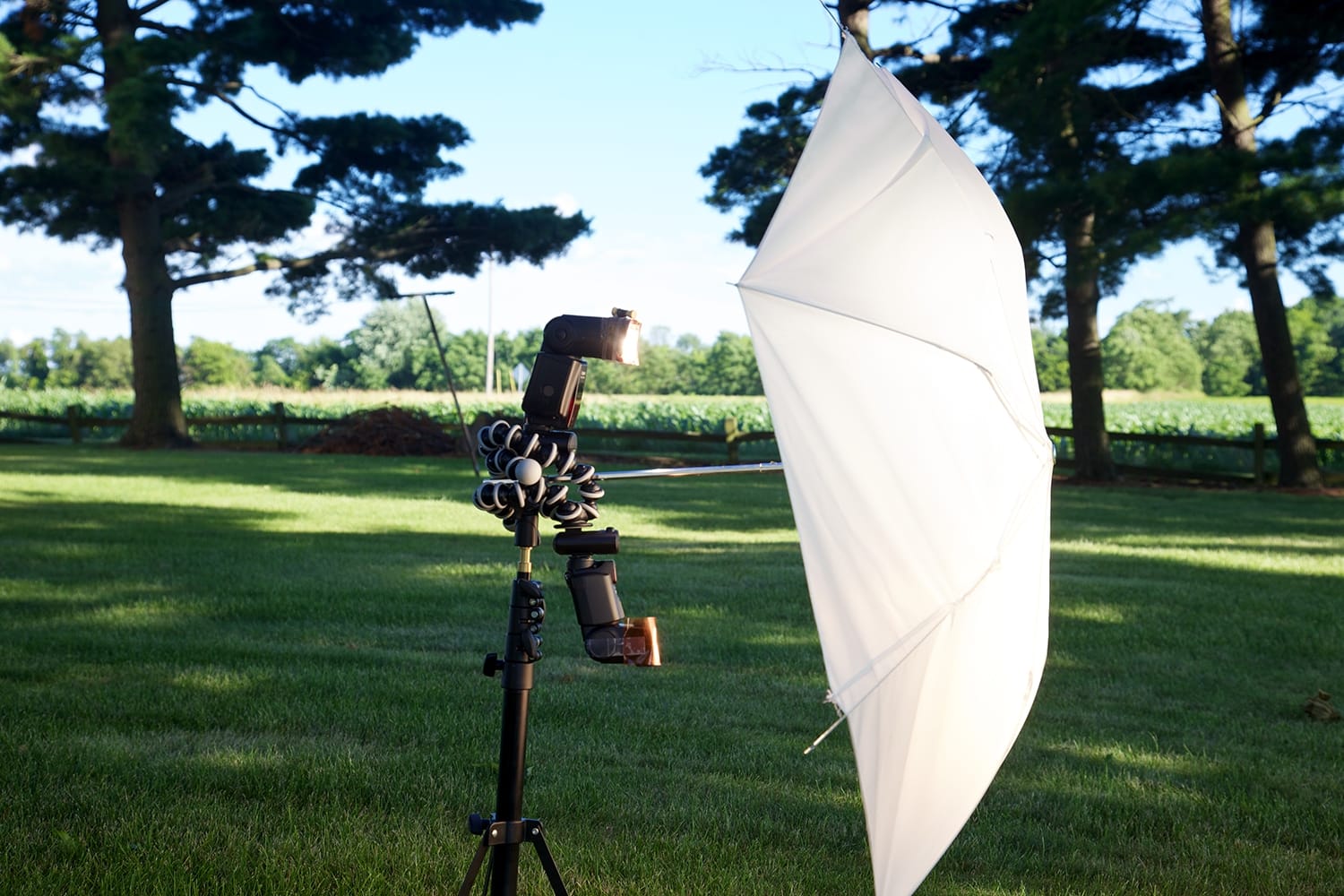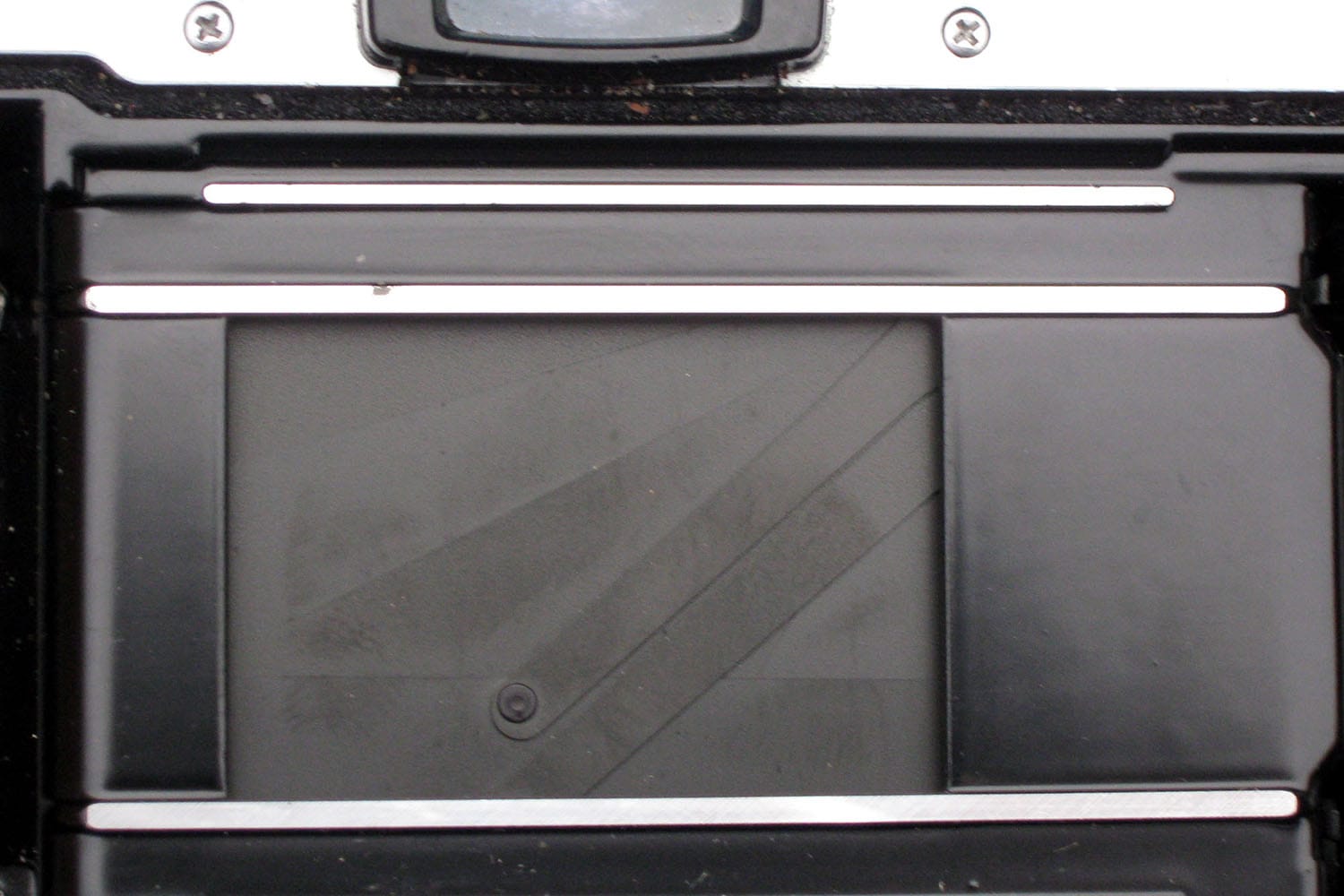How to Shoot Using High-Speed Flash Sync
Let’s take a look at high-speed flash! But, in order to understand high-speed syncing, we first need to understand how flash works with your DSLR.
DSLRs have a shutter in them that is made up of two curtains. When you take a photograph, these curtains move quickly from the bottom of the frame to the top. And, on most cameras, if you shoot at under 1/200th of a second, your entire sensor will show before the second curtain comes across the sensor.

Flash light, however, is extremely fast and problems arise if you try and shoot at above 1/200th of a second. At faster speeds the flash will only illuminate the part of the image that isn’t covered by the sliding shutter, leading to a section of image left dark.
This will often show up as a line across your image when you shoot with flash and above 1/200th of a second. Some cameras allow for faster shutter speeds though, like 1/250th of a second.
High-Speed Sync Flash
So, how do you get around this problem and shoot at faster shutter speeds? Fortunately, many speedlights (particularly high-end ones) come with a high-speed sync flash setting.
This allows you to work with both faster shutter speeds and wider aperture settings in situations that still need higher shutter speeds. So, for instance, if you’re shooting fast action, but want a large depth of field, having the option to use high-speed flash can be really useful, as you’ll be able to use the high shutter speeds you need to freeze movement.
High-speed sync works in a simple fashion, by firing the flash for a longer duration than in normal flash mode. This means that the flash fires all the way through from the front curtain opening to the rear curtain closing, thus avoiding unexposed areas of the image.
The flash is actually firing continuously at many thousands of time per second – effectively merging together to create a continuous stream of flash.
With most speedlights that have this feature, you can leave high-speed sync turned on at all times, as the camera and flash will automatically revert back to standard flash when the shutter speed drops back down to maximum shutter speed or below.

Photo by Travis Isaacs
There are a few things that you need to be aware of when using high-speed sync. When you’re using high-speed sync, you immediately lose a stop of flash power and, for every stop increase in shutter speed; you’ll lose another stop of flash power.
This may seem like an issue but, in reality, you’re likely to be opening up the lens an f-stop every time you increase the shutter speed, in order to adjust your settings for use with the flash.
High-speed sync also means that you lose the motion freezing ability of the standard flash. This is due to the fact that the flash is on continuously in high-speed mode, as opposed to in standard mode, where the flash fires briefly and extremely quickly.
But, as you’ll only be using high-speed sync at faster shutter speeds, this should negate the issue and keep motion frozen. You also can’t get ghosting when using high-speed sync mode.
Front and Rear Curtain Sync
We’ve talked about how these two curtains open and close in the time set by the shutter speed. The default setting in speedlights is front curtain sync, whereby the flash fires at the moment this front curtain starts to move, and this illuminates the subject for the duration of the shutter speed.

Photo by zaphad1
But you can also set the flash to fire at rear curtain sync, so that the flash doesn’t begin to fire until the second curtain starts to move. This can be used to create various effects, and is particularly useful with longer shutter speeds. Do bear in mind though that rear curtain sync can’t be used with high-speed sync.
In Conclusion
High-speed sync can make a real difference to your photography, but you will need a speedlight with the capability and a compatible camera. It allows you to work past the limitations set by standard flash mode, and is useful for a multitude of reasons.
Most obviously, it’s great for sports and wildlife photography, but it’s also useful for working with long telephoto lenses. And, if you want to shoot outdoor portraits, high-speed sync can help you use wider apertures with soft backgrounds. It’s a very useful tool and worth taking full advantage of on a modern system.
